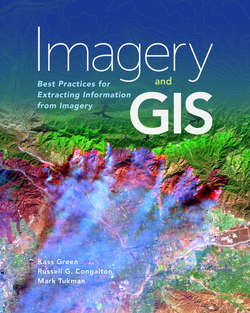Читать книгу Imagery and GIS - Kass Green - Страница 57
На сайте Литреса книга снята с продажи.
Access
ОглавлениеOrganizations make imagery available in a variety of ways. It can be delivered on a hard drive, downloaded from the web, or served as image services. Because imagery files are very large, access can be problematic and can affect the cost of working with imagery. Free imagery with no license restrictions can still be difficult to use if its access is cumbersome.
Before digital sensors, imagery was accessed as hard copy negatives and photographs. Reproduction of the negatives and photographs was very expensive and, as a result, access to them was limited. With the adoption of digital sensors, digital imagery was initially accessed from tape, and then from hard drives and CDs, and processed first on mainframe computers and then on desktop computers.
Until recently, the most efficient way to deliver and gain access to high-spatial-resolution imagery for analysis was still by shipping hard drives and then using on desktop machines or serving the imagery locally. With increases in Internet bandwidth, imagery is increasingly accessible by FTP download or direct access from cloud storage. In this way, imagery can be downloaded to desktop machines or directly used in the cloud infrastructure.
Over the last five years, several imagery providers and software companies have begun to host imagery in the cloud and offer direct visualization, analysis, and processing of the imagery. Most notable is Esri’s Landsat services, which obtain Landsat imagery hosted on Amazon Web Services and provide access and on-the-fly processing of large collections of multitemporal multispectral Landsat imagery that is updated daily as imagery is acquired by the USGS. Google also hosts archives of Landsat imagery and provides processing to educational and research organizations.
